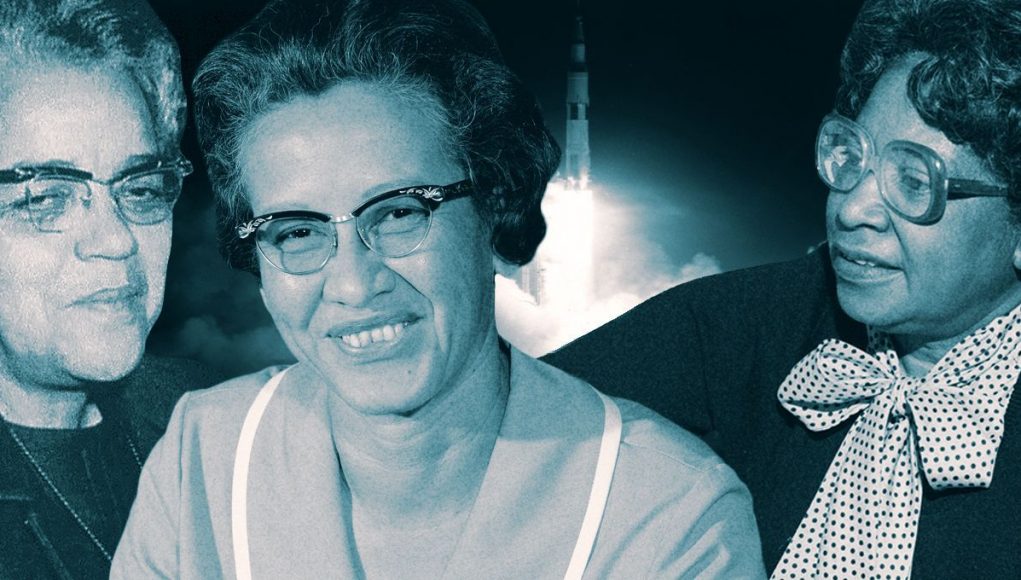Like many of my friends and acquaintances I made it a point to attend the film, “Hidden Figures” starring Taraji P. Henson, Olivia Spencer, and Janelle Monae as Katherine Johnson, Dorothy Vaughn, and Mary Jackson, respectively. This is the story of the African-American women mathematicians behind the NASA space program in the early 1960s. My interest in the film was fueled by having seen the real Katherine Johnson receive the Septima Poinsette Clark Award at the Alpha Kappa Alpha Sorority, Inc. International Convention this past July in Atlanta, Georgia.
Johnson, Vaughn, and Jackson remind me that there are so many talented black women – black people, in general — who are all around us but who the society regularly ignores. The challenge of the film for me as a black woman is the way segregation as an institutional system was (and continues to be) a part of the warp and woof of United States culture. I also appreciate the way the film illustrates how recent this system was in full force. “Hidden Figures” is not some Civil War or Reconstruction era film. The action begins in 1961! Yes, the so-called revolutionary, free love, civil rights 1960s are the setting for this film. The women live in a world where they continue to sit in the back of a bus, use only the “colored” section of the public library, drink from a separate coffee pot, and use a separate bathroom. And, how is it that the black women recognize that all of these things are wrong but the “smart” white people with whom they work are fully comfortable with the state of things?
Watching the film reminds me of the ongoing complicity that ordinary, everyday white people endorse day in and day out and take as normal. As a society, we are quick to point out outrageous acts of racism — shootings, church bombings, and shouting racial epithets. But, those are not the kinds of things that most of us experience in our daily lives. No, most of us experience the kind of racism that is hidden in plain sight. For example, when white people sit in a meeting making high-level decisions and there is not ONE person of color in that meeting, that is an example of racism hiding in plain sight. When white parents head to their children’s schools (especially schools claiming to be “diverse”) and sit in concerts featuring all-white orchestras or visit gifted and talented programs that are all white or applaud at National Honor Society inductions where every single student is white (or of high-status Asian descent) … that is racism hiding in plain sight. Similarly, if in those same schools the special education designations and suspension and expulsion rates are overwhelmingly black and/or Latino, that too is an example of racism hiding in plain sight. Indeed, in all of those circumstances where I find myself as the ONLY black person in the room I see the racism hiding in plain sight.
I am very proud of the accomplishments of Katherine Johnson, Dorothy Vaughan, and Mary Jackson. I am proud to call them my sorority sisters. But, I am also proud of the ways they fought an unjust system as college graduates who knew things were not fair, even in the federal government. They did remarkable work. What was also hiding in plain sight for me was the fact that NO African-American men seemed to rise to the stature of mathematician, engineer, or programmer at the Langley NASA facility. We do know that astronauts Guion Bluford and Ronald McNair were among the first African-American men to participate in the space program, but what about black men who could have filled some of those behind-the-scene roles in mathematics, engineering, and computer programming? Perhaps mathematicians like J. James Andrews, Augustin Banyaga, Albert T. Bharucha-Reid, Donald Blackwell, or W. Scott Williams or engineers like Jerry Lawson or Jesse Russell – all of whom were contemporaries of the women of “Hidden Figures” – could have been recruited to advance the cause of science.
As I stated in the first paragraph, I learned of Katherine Johnson’s accomplishments when she won the Septima Poinsette Clark Award at the 2016 Alpha Kappa Alpha Sorority, Inc. Convention. As excited as I was to learn of Katherine’s outstanding work, I had to wonder how many people witnessing the award ceremony actual knew who (our other sorority member) Septima Poinsette Clark was. Her work was pivotal in shaping my own career and approach toward fighting racism. But, just as people probably didn’t know about Katherine Johnson, too many of us do not know of Septima Clark and she was right there hiding in plain sight.










